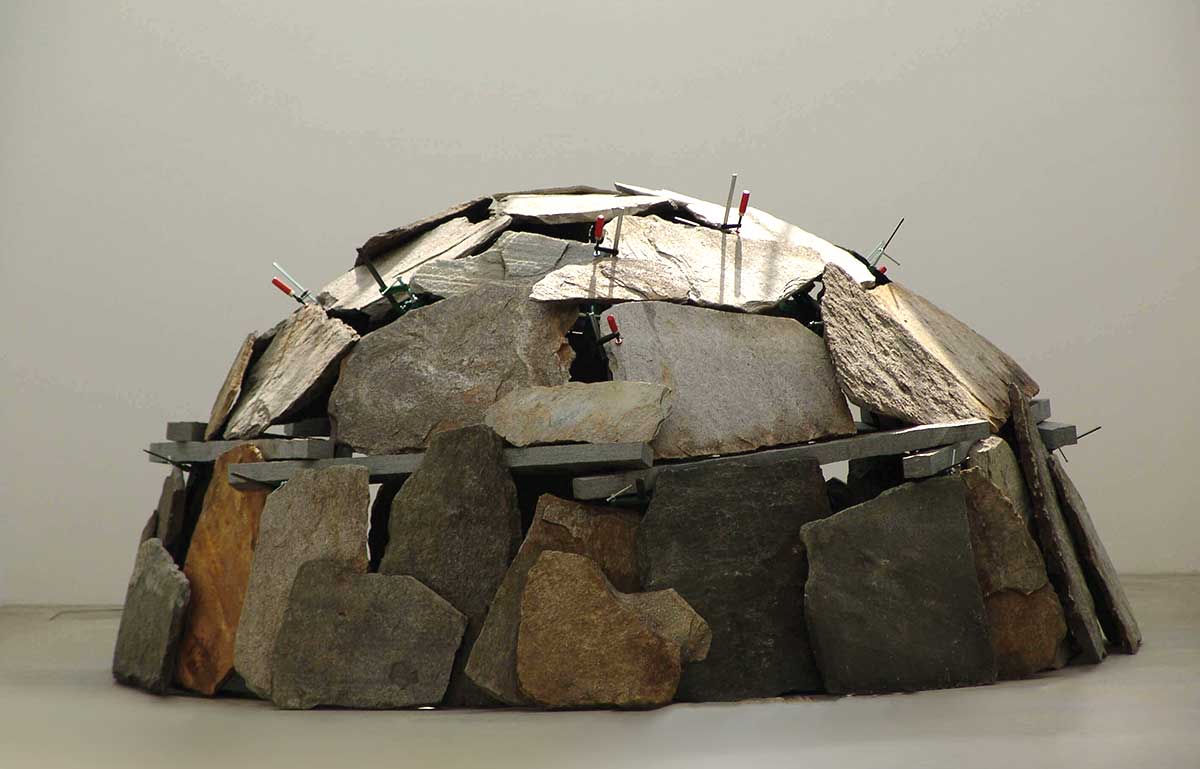
Arte Povera (meaning ‘poor art’ in Italian) was a pioneering conceptual art movement from Italy that spanned the late 1960s to the 1970s. Artists worked with deliberately ‘poor’, non-traditional art materials including soil, rags, coffee, stones, wood and sticks. They chose to work with these cheap or naturally derived, ‘valueless’ substances to disrupt the increasing commercialization of the contemporary art world through art movements such as Abstract Expressionism and Minimalism. Some of the leading artists associated with Arte Povera include Jannis Kounellis, Mario Merz, Alighiero Boetti, Pino Pascali, Giovanni Anselmo, Guiseppe Penone and Michelangelo Pistoletto. We look through the art movement’s history and central tenets in more detail.
The Term Arte Povera Was Coined by Germano Celant

Italian art critic and curator Germano Celant first coined the term Arte Povera to describe his observations for a rising trend amongst artists working throughout Italy, who deliberately chose to work with a range of surprising, unconventional materials, often to make a political statement about the increasing monetization of art, and the rising economic instability throughout Italian cities. Celant cemented his argument with a series of curated exhibitions and theoretical texts which secured the movement’s foundation, including the landmark exhibition Arte Povera Im Spazio (The Space of Thoughts) at Galeria La Bertesca in Genoa.
When describing the materials that the artists worked with in one exhibition text, Celant wrote, “Artists began working with animals, deserts, wax, rubber, ice, Sulphur, glass and snow – unstable but vital elements that materialized thoughts and concepts.”
Artists Were Spread Throughout Italy

Artists that Celant associated with Arte Povera came from throughout Italy, but most predominantly in the urban centers of Turin, Milan, Genoa, and Rome, areas that had been badly impacted by rising poverty. Many artists chose to work with inexpensive materials due to their own financial constraints, but their work could also be read as a deliberate backlash against the pretensions of the contemporary art world, which had become increasingly separated from the lives of ordinary people.
Get the latest articles delivered to your inbox
Sign up to our Free Weekly Newsletter
Arte Povera Took Many Forms

Celant’s curated exhibitions were widely varied and they demonstrated the huge variety of artists working conceptually in deliberately anti-establishment ways, with raw, crude and visceral materials. They brought materials together in surprising and unexpected ways, creating acts of performance and theatre, street art, collage and assemblage. Jannis Kounellis made crude assemblages using coal, coffee and sack cloth which deliberately engaged the human senses, while Mario Merz worked with brushwood, beeswax, slate and stone to create surprising sculptural objects.

Many Arte Povera artists also sought ways of reconnecting with nature through found substances and organic materials, bucking Minimalism’s rising trend for industrial, machine-like media with a clean, polished appearance. Instead, they made work that was deliberately crude, dirty and tactile. Artists saw this connection with nature as a means of bringing art back in touch with elements of myth, storytelling and memory that had once been fundamental, spiritual aspects of our society before industrialization took hold.
The Movement Was Widely Influential

Arte Povera was a widely influential art movement that exerted a powerful impact on the next generation of artists. Land Art, also known as Earth Art, was born out of the same desire to reconnect with nature and organic, found materials, as was Environmental Art. The international Fluxus art movement also emerged in the wake of Arte Povera, building on the same experimental and unconventional use of materials lifted from everyday life, which could be transformed into curious, mythical objects and experiences. In particular, German Fluxus artist Joseph Beuys demonstrated his great admiration for the earlier Italian movement with much of his work, which explored material including wax felt, rock and wood, investing it with strangely mythical and regenerative properties.







